Back First Aid Explained
How to Carry an Injured Person by Yourself During First Aid
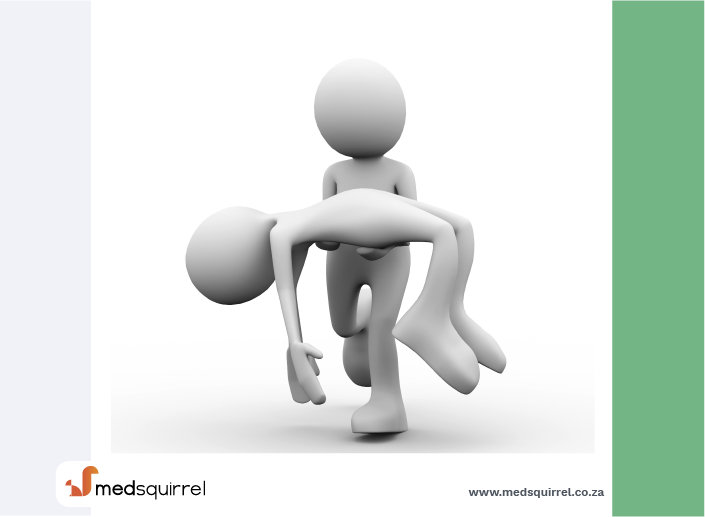
We have selected the following expert medical opinion based on its clarity, reliability and accuracy. Credits: Sourced from the website wikiHow. Please refer to your own medical practitioner for a final perspective, assessment or evaluation.
Overview
Do not move an injured person unless they are in a life-threatening situation. Moving an injured person can worsen the injury. If the person has a spinal injury it can cause them to be permanently paralyzed. If the person is not in immediate, life threatening danger, call emergency responders for medical help. If you do need to move the person out of life threatening danger, it is important to do it correctly to reduce the risk to the injured person and to yourself.
1: Protecting the Spine
1. Do not move someone if you think she has a spinal injury
Moving them could increase the damage and even cause them to be paralyzed. If you are unsure if the person has a spinal injury, then you should proceed as if they do.
Signs of a spinal injury include:
- Having a head injury, particularly one that involved a blow to the head or neck.
- Showing changes in the state of consciousness, for example, being unconscious or confused.
- Experiencing pain in the neck or back.
- Not moving the neck.
- Experiencing weakness, numbness, or paralysis in the limbs.
- Losing control of the bladder or bowels.
- The head or neck is twisted in a strange position.
- Reacts to painful stimulus (trapezius pinch or sternal rub) by flexing all their limbs inward or by extending all her limbs out (referred to as posturing).
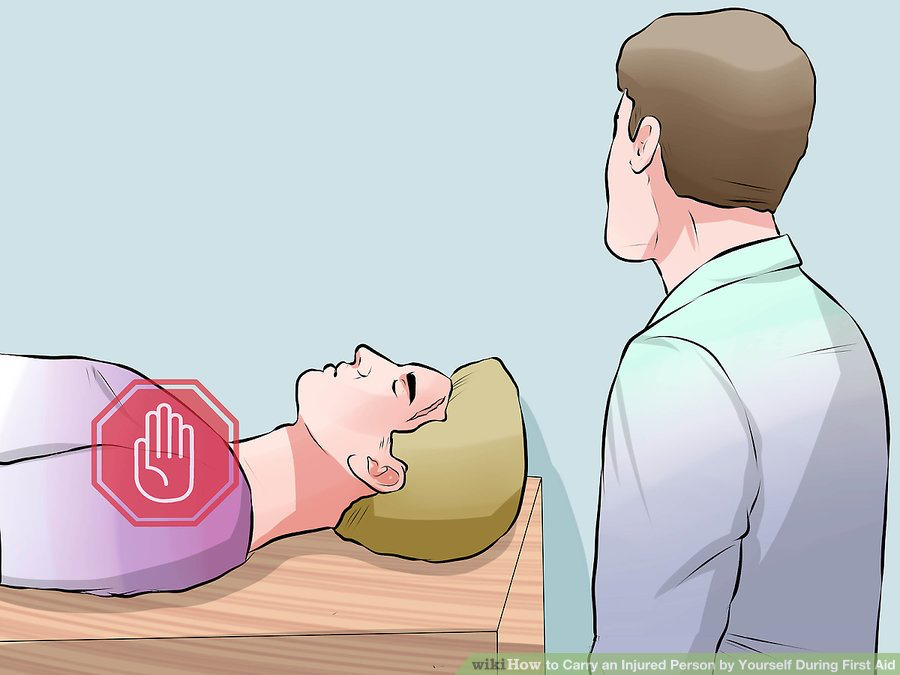
2. Stabilize someone with a spinal injury
If the person’s head or body moves, it may increase the damage to the spine.
You can prevent this by:
- Putting towels or pillows on both sides of the person’s head to prevent it from rolling or slipping.
- Providing first aid, like CPR, without moving the head. This means that you should not tilt the person’s head back to open the airway. Instead, use the jaw-thrust method.
- Not taking the person’s helmet off if he was wearing one. For example if they had a bike or motorcycle helmet on, leave it so you don’t move the spine.
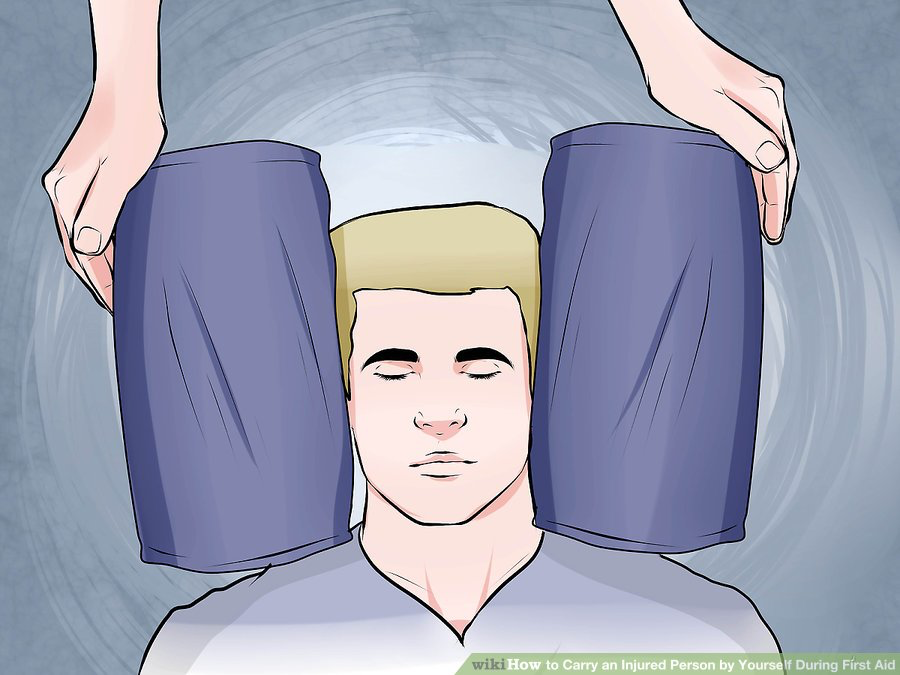
3. Roll the person onto their side if necessary
This should only be done if the person is in immediate danger, for example if they are vomiting or choking on blood. Under these circumstances, you may have to roll the person onto their side. It is important to do this with at least one other person so that you can prevent the person’s body from twisting.
- One person should be positioned at the head and the other at the injured person’s side. The two of you must coordinate so that the spine remains aligned while the person is rolled. Twisting can cause additional damage to the spine.
- While rolling, wait for the lead person's cue. Roll by grabbing the opposite shoulder and hip, rolling the patient toward you. While the person is in this position, check their back and neck quickly for obvious injuries.
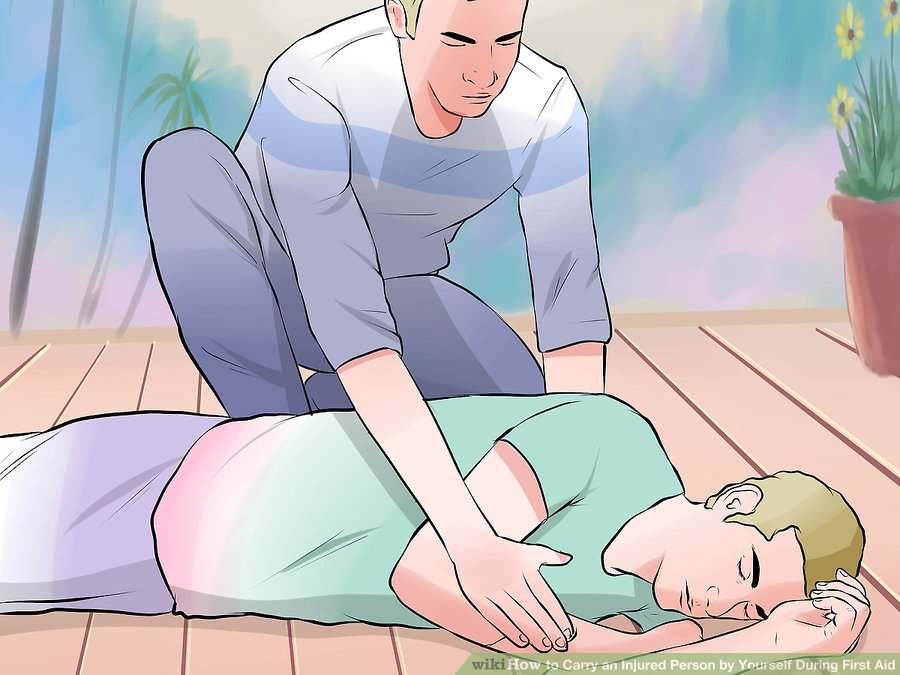
2: Moving a Person Without a Spinal Injury
1. Use the human crutch method
If the person is conscious and can move on their own, this method might be the most effective. It can be used if the person has an injury to only one leg.
- Crouch with your knees bent and back straight next to the injured person on the side of the injury. Have the person sit up and wrap their arm over your shoulder. Slowly stand, allowing the injured person to support themself with their good leg. You will support their weight on the side with the injury. Hold their hand around your shoulders with the hand furthest from them. Put your other hand around their waist.
- Help them balance as they hop to safety. This enables them to minimize the amount of weight that must go on the injured leg.
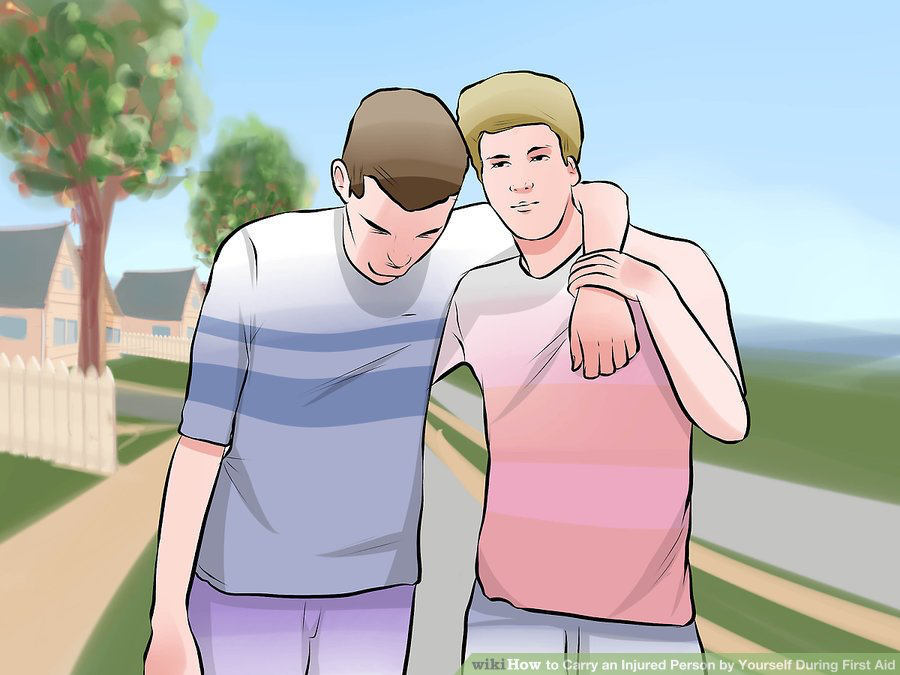
2. Drag the person to safety
The drag method is safer than lifting the person, for both you and the injured person. Lifting increases the amount of weight that you must support and it puts the person at risk of falling. Always pull slowly and steadily, moving the person in as straight a line as possible. You want to keep the person’s spine aligned so that it does not twist or bend unnaturally. Which type of drag you use will depend on the injures that the person has.
- Leg drag — This method is used when the person has no leg injuries, but cannot walk. Bend at your knees so that your back remains straight, but you can hold the person’s ankles. Lean back and slowly and steadily use your weight to drag the person to safety. Be careful not to drag the person over surfaces or objects that may injure them. If you are sure that the person has not suffered a spinal injury, you can lift the head and put something underneath to protect it. If you think the person might have a spinal injury, you should move the head as little as possible.
- Arm drag — This method is necessary when the person has leg injuries. Bend your legs and keep your back straight. This will protect your own back. Lift the person’s arms above the head and grasp the person by the elbows. Squeeze the elbows against the sides of the head so that it remains supported and does not drag on the ground. Use your own weight to lean back and slowly drag the person to safety.
- Clothing drag — If the person has injuries on both the arms and legs, it may be necessary to drag them by their clothing. If you use this method, pay attention to the clothing to make sure that it doesn’t suddenly tear and cause the person’s head to bang on the ground. Bend your knees and grip the clothing under the armpits. Lean back and use your weight to drag the person.
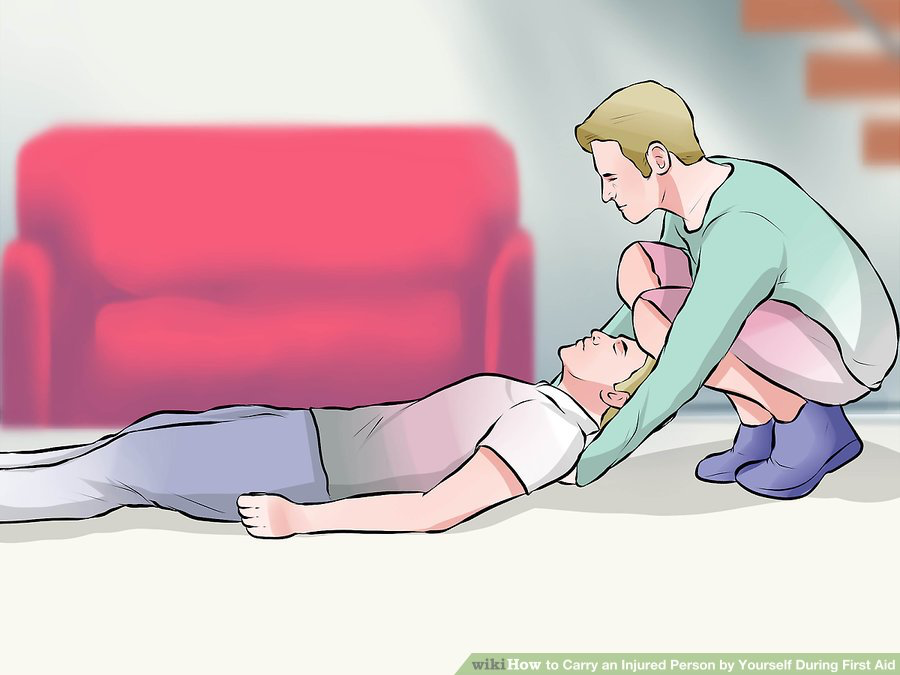
3. Carry a child using the cradle method
This method is quick and easy but it can only be used for children and people who are much smaller than the rescuer. Because the person’s entire weight hangs on your arms, you will tire quickly.
- Scoop the child up so that you are carrying them in front of you with one hand around their back and the other under his knees.
- Bend at the knees and keep your back straight when lifting. If you injure your back in the process of lifting the person, you won’t be able to help as effectively.
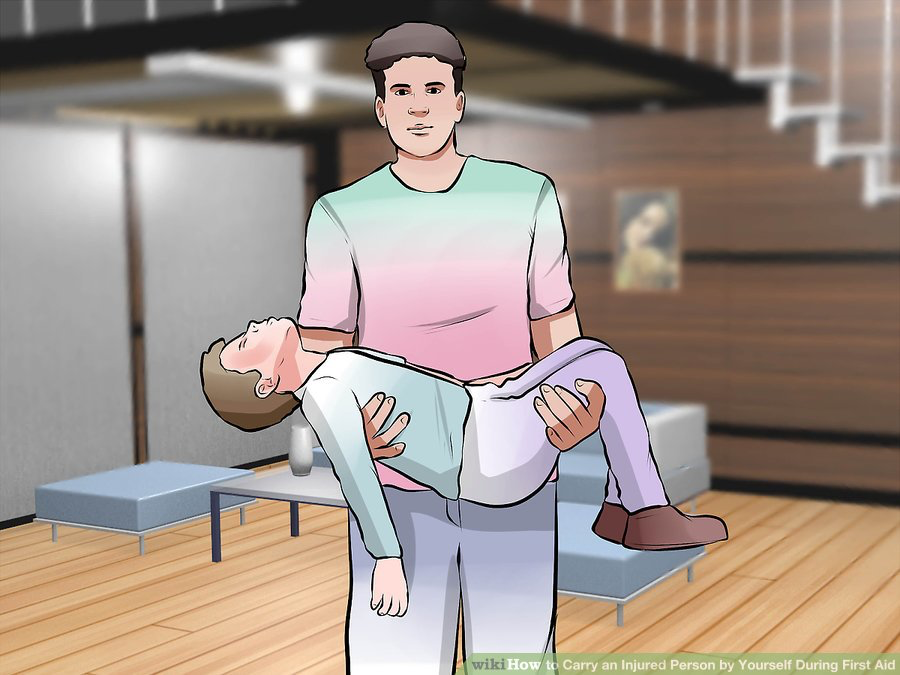
4. Carry a larger person like a backpack
This method can be used if the person is too large for you to carry in the cradle position or the person must be carried too far for you to maintain the cradle position. It can be used for people who are unconscious.
- Start with the injured person on their back. Bend their legs and stand with your feet on their toes. Pull them up by their wrists to a standing position.
- As you put the person into a standing position, rotate so that the person’s chest is against your back and their arms are over your shoulders. This allows you to hold the person’s arms, tip forward slightly at the waist, and carry the person like a backpack.
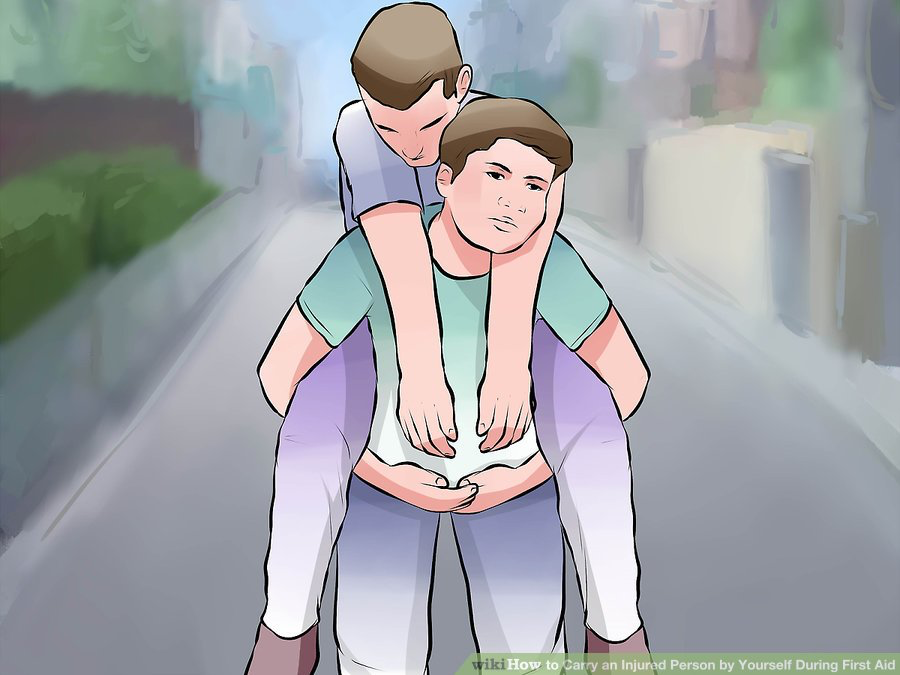
_______________________________________________________________________________________________________________________
Are you a healthcare practitioner who enjoys patient education, interaction and communication?
If so, we invite you to criticise, contribute to or help improve our content. We find that many practicing doctors who regularly communicate with patients develop novel and often highly effective ways to convey complex medical information in a simplified, accurate and compassionate manner.
MedSquirrel is a shared knowledge, collective intelligence digital platform developed to share medical expertise between doctors and patients. We support collaboration, as opposed to competition, between all members of the healthcare profession and are striving towards the provision of peer reviewed, accurate and simplified medical information to patients. Please share your unique communication style, experience and insights with a wider audience of patients, as well as your colleagues, by contributing to our digital platform.
Your contribution will be credited to you and your name, practice and field of interest will be made visible to the world. (Contact us via the orange feed-back button on the right).
Disclaimer:
MedSquirrel is a shared knowledge, collective intelligence digital platform developed to share medical knowledge between doctors and patients. If you are a healthcare practitioner, we invite you to criticise, contribute or help improve our content. We support collaboration among all members of the healthcare profession since we strive for the provision of world-class, peer-reviewed, accurate and transparent medical information.
MedSquirrel should not be used for diagnosis, treatment or prescription. Always refer any questions about diagnosis, treatment or prescription to your Doctor.
